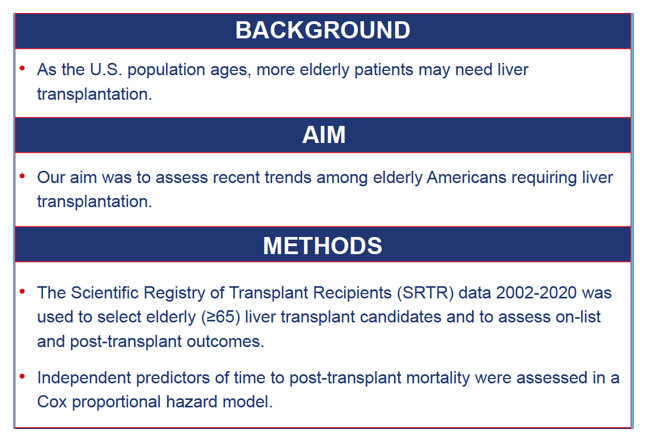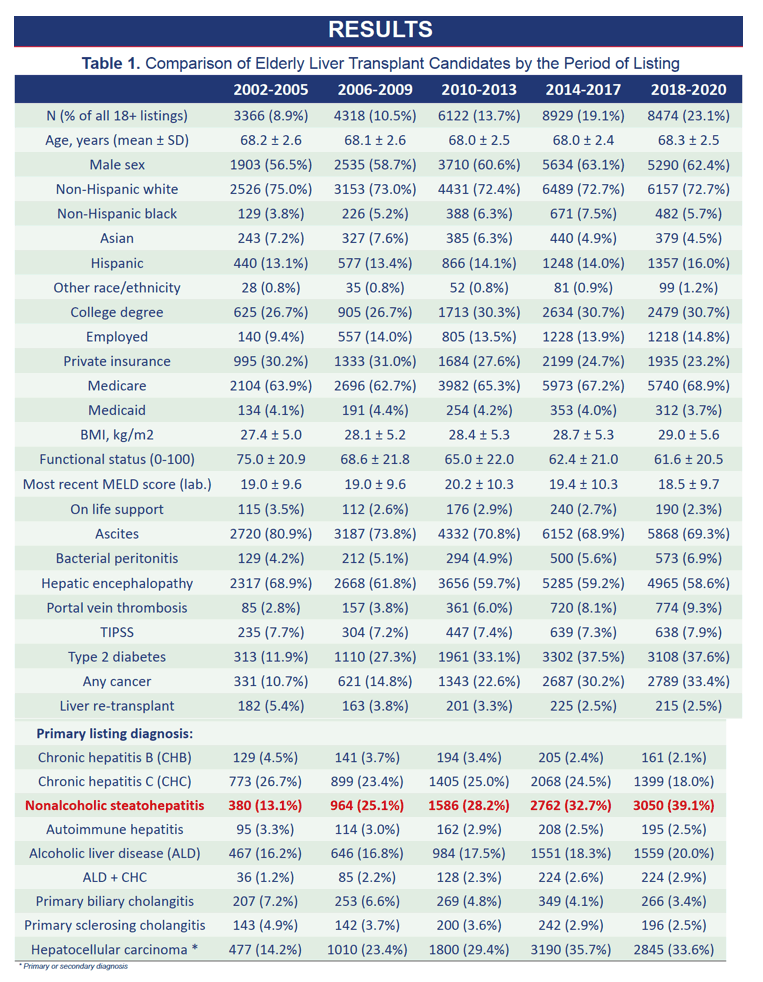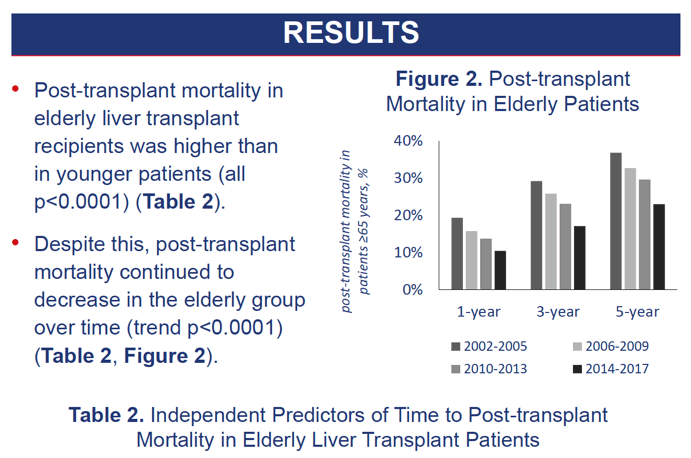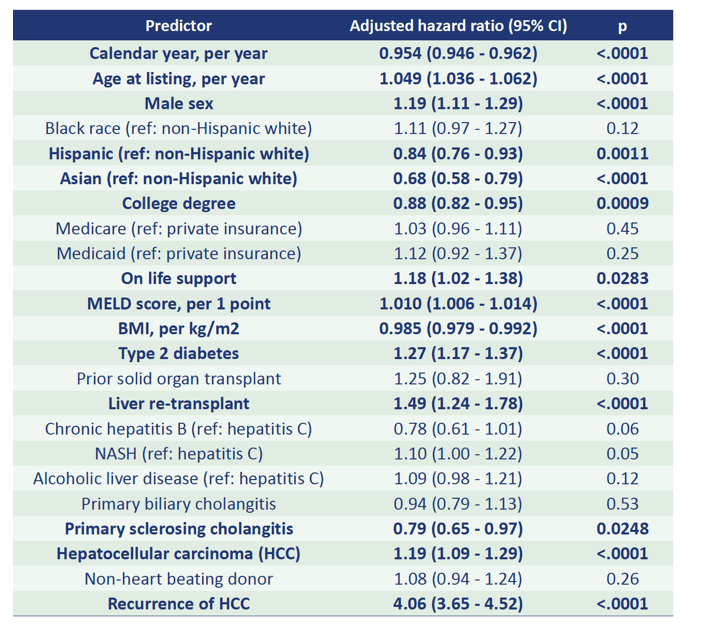 |
 |
 |
| |
Non-alcoholic Steatohepatitis is the Most Common Indication for Liver Transplantation among the Elderly: Data from the U.S. Scientific Registry of Transplant Recipients
|
| |
| |
AASLD 2021 Nov 12-16
• study has found that the proportion of older Americans who need a liver transplant (LT) has sharply increased in recent years, often due to the rising number of cases of nonalcoholic steatohepatitis (NASH). As the U.S. population ages, researchers estimate that more patients aged 65 or older will need an LT than ever before.
• Over time, the proportion of patients ≥65 among all adult LT candidates increased from 9% (2002-2005) to 23% (2018-2020) (trend p<0.0001).
• During this period, proportion of NASH among these candidates increased from 13% (2002-2005) to 39% (2018-2020) while the proportion of HCV decreased from 27% to 18%, respectively (p<0.0001).
Maria Stepanova, 1 Khaled W. Kabbara, 2 Denise Mohess, 2 Alva Roche-Green, 2 Manisha Verma, 2 Zobair M. Younossi 2,3,4
1. Center for Outcomes Research in Liver Diseases, Washington, DC, United States.
2. Center for Liver Diseases, Department of Medicine, Inova Fairfax Medical Campus, Falls Church, VA, United States
3. Inova Medicine, Inova Health System, Falls Church, VA, United States.
4. Betty and Guy Beatty Center for Integrated Research, Inova Health System, Falls Church, VA, United

abstract
Background: As the U.S. population ages, more elderly patients may need LT. Our aim was to assess recent trends among elderly Americans requiring LT.
Methods: SRTR data (2002 to 2020) was used to select elderly (≥65) LT candidates and assess on-list and post-LT outcomes. Predictors of post-LT mortality were assessed in a Cox proportional hazard model.
Results: During the study period, 31,209 LT candidates ≥65 were waitlisted: age 68±3 years, 61% male, 73% white, 66% Medicare, 33% with type 2 diabetes (T2DM), BMI 29±5 kg/m2, functional status (0-100) 65±22, MELD score 19±10, 3% LT retransplants. Etiologies included NASH (31%), hepatitis C (HCV) (23%), alcoholic liver disease (18%), primary biliary cholangitis (5%), hepatitis B (3%), autoimmune hepatitis (3%), and primary sclerosing cholangitis (3%); 30% also had hepatocellular carcinoma (HCC). Over time, the proportion of patients ≥65 among all adult LT candidates increased from 9% (2002-2005) to 23% (2018-2020) (trend p<0.0001). During this period, proportion of NASH among these candidates increased from 13% (2002-2005) to 39% (2018-2020) while the proportion of HCV decreased from 27% to 18%, respectively (p<0.0001). Of these candidates, 54% were eventually transplanted, 12% died while waiting, 14% were removed due to deterioration, 2% refused LT, 4% improved, 7% were removed for other reasons, and 8% remained listed. In comparison to younger LT candidates, elderly candidates had lower crude transplant rate (54% vs. 59%, p<0.0001), higher rate of removal due to deterioration (14% vs. 9%, p<0.0001) but similar on-list mortality (p>0.05). In multivariate analysis, independent predictors of a higher chance of receiving LT were more recent years of listing, male sex, college degree, higher MELD score, and HCC (all p<0.01). In contrast, being Hispanic, covered by Medicaid, and having pre-transplant T2DM were associated with a lower chance of receiving LT among elderly (all p<0.01). Post-LT mortality was higher than in younger recipients (all p>0.0001). Despite this, mortality continued to decrease in this group (Figure). In multivariate analysis, independent predictors of higher post-LT mortality were earlier year of LT, older age, male sex, higher MELD score, history of T2DM, re-transplantation, HCC (at baseline and in follow-up) (all p<0.01).
Conclusion: The proportion of elderly patients in need of LT in the U.S. is sharply increasing. The outcomes of these patients have been improving in the past decades.





|
| |
|
 |
 |
|
|